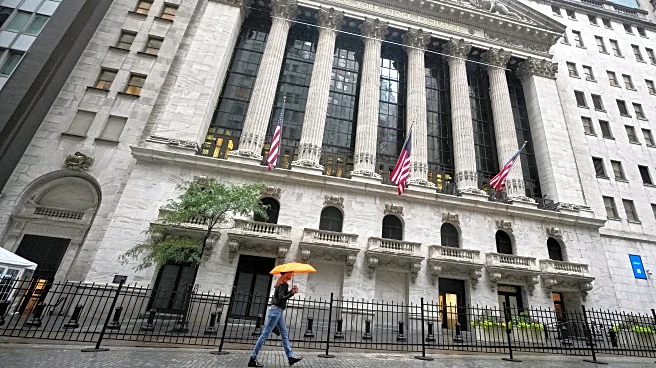What's Happening?
U.S. Treasury yields have experienced significant fluctuations recently, with the 10-year yield reaching 4.38%. Factors contributing to this rise include policy uncertainty, deleveraging, and slowing demand.
Foreign demand for Treasuries showed mixed results, with strong interest in 10-year and 30-year auctions but weaker demand for 3-year notes. The reconciliation bill in Congress, adding trillions to U.S. debt, has heightened fiscal concerns. Despite these challenges, current yield levels present a buying opportunity for long-term investors.
Why It's Important?
The rise in Treasury yields reflects broader economic uncertainties and fiscal challenges facing the U.S. government. Higher yields increase borrowing costs, impacting government spending and potentially leading to tighter fiscal policies. The mixed foreign demand signals potential shifts in global investment strategies, which could affect international capital flows and economic stability. Long-term investors may benefit from higher yields, but the overall impact on the economy requires careful monitoring.
What's Next?
The Federal Reserve may need to intervene to stabilize markets if yield volatility continues. Potential adjustments to monetary policy, including balance sheet changes or liquidity facilities, could be considered to ensure market functioning. Stakeholders will closely watch Congressional actions on fiscal policy and debt management, as these will influence future yield movements and investor confidence.
Beyond the Headlines
The fluctuations in Treasury yields highlight the interconnectedness of fiscal policy, global economic conditions, and investor behavior. The evolving landscape may prompt a reevaluation of traditional investment strategies and risk management practices. As the U.S. navigates these challenges, the role of Treasuries as a safe-haven asset may be reassessed, influencing long-term economic policies and global financial stability.













